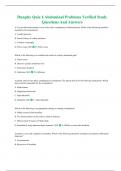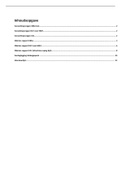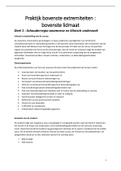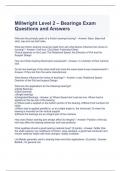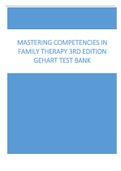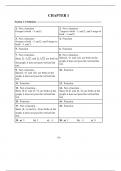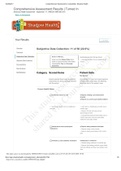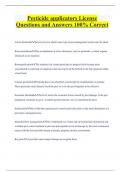Exam (elaborations)
Dunphy Quiz 4 Abdominal Problems Verified Study Questions And Answers
- Module
- Institution
Dunphy Quiz 4 Abdominal Problems Verified Study Questions And Answers A 35-year-old female patient is seen in the clinic complaining of abdominal pain. Which of the following should be included in the examination? A. Lumbar puncture B. Family history of cardiac problems C. Contrast venography ...
[Show more]
